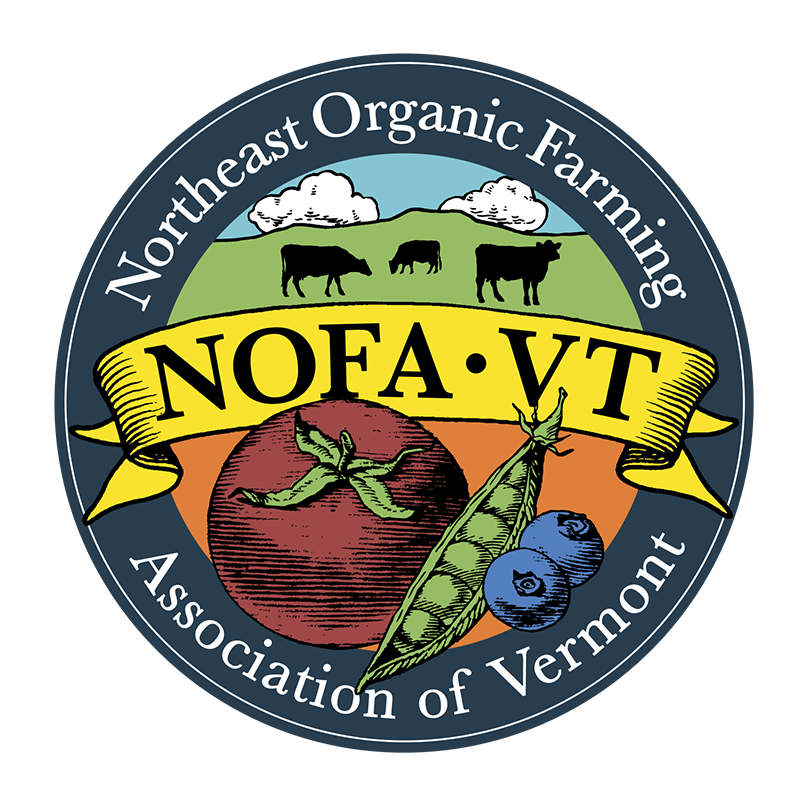“We’re going to have a lot more [challenging seasons] for all of us who continue farming,” Evan Perkins of Small Axe Farm recently shared during a winter meeting of the Jack Lazor Memorial Soil Health Stewards cohort. “This will probably be looked back upon as a good year in a few decades,” he said, reflecting on this past growing season that brought record-breaking levels of precipitation to many parts of Vermont. Evan cautioned against the mindset that we just have to get through this one hard year and asserted the imperative for longer-term planning and solutions.
During this meeting, farmers shared reflections on soil management practices and approaches that either held up or changed for them over the course of this past growing season. A critical emerging theme was that flexibility and adaptation are some of the most essential components of managing soil health. There is not one “right” way that “works” or will keep working over and over again. Rather, managing for soil health is a process that evolves over time and must be considered in relation to changing conditions across all three pillars of sustainability: environmental, social, and economic.
“I would say this season challenged some of my assumptions that I didn’t really know were assumptions,” Ansel Ploog of Flywheel Farm reflected. Ansel continued, “I have been trying to have a standard operating practice for every task that we wanted to do on the farm. And what we have instead is a really robust toolbox, full of many different options. This year was the first year that I realized what an advantage that is for us because we can choose which tool and which practice to do according to the weather, the labor we have available, and the tools we have available. And it’s really easy to tweak and incorporate new knowledge into whatever we’re doing.”
While the concept of “no-till” has been gaining popularity over recent years as the focus of many discussions on soil health and climate-mitigating agricultural practices, it is critical to understand that there are a plethora of management practices that contribute to building soil organic matter and that there is not just one right way to manage for soil health. In fact, having a diverse toolbox of options is key. “Our goal, as farmers and land stewards, is not to grow vegetables without doing any tillage. Our goal is to grow food for our community in a way that improves the productive potential of this land, without imposing harm onto our local, regional, and global ecosystem,” Ryan Fitzbeauchamp from Evening Song Farm in Shrewsbury recently shared. Ryan continued, “In general, our farm is doing less tillage than we used to in order to meet that goal. And also, certain forms of tillage, in certain contexts, can help us to improve the long-term productive potential of this land. While it’s true that excessive tillage can rapidly diminish the health of the soil, it’s also true that skillful use of tillage can be used together with other soil care practices to increase the long-term fertility of the soil.”
Illustrated by the examples below, gathered from participants in the current Jack Lazor Memorial Soil Health Stewards Cohort, we’re excited to share a glimpse into the dynamic practices of soil health management, and how intricately each of these farms and others are thinking about soil and soil management. Note that although each of these farms is smaller scale—five acres or less—many of these practices and approaches are scalable and also being employed on larger farms.
Patrick Sullivan from Ananda Gardens in Montpelier
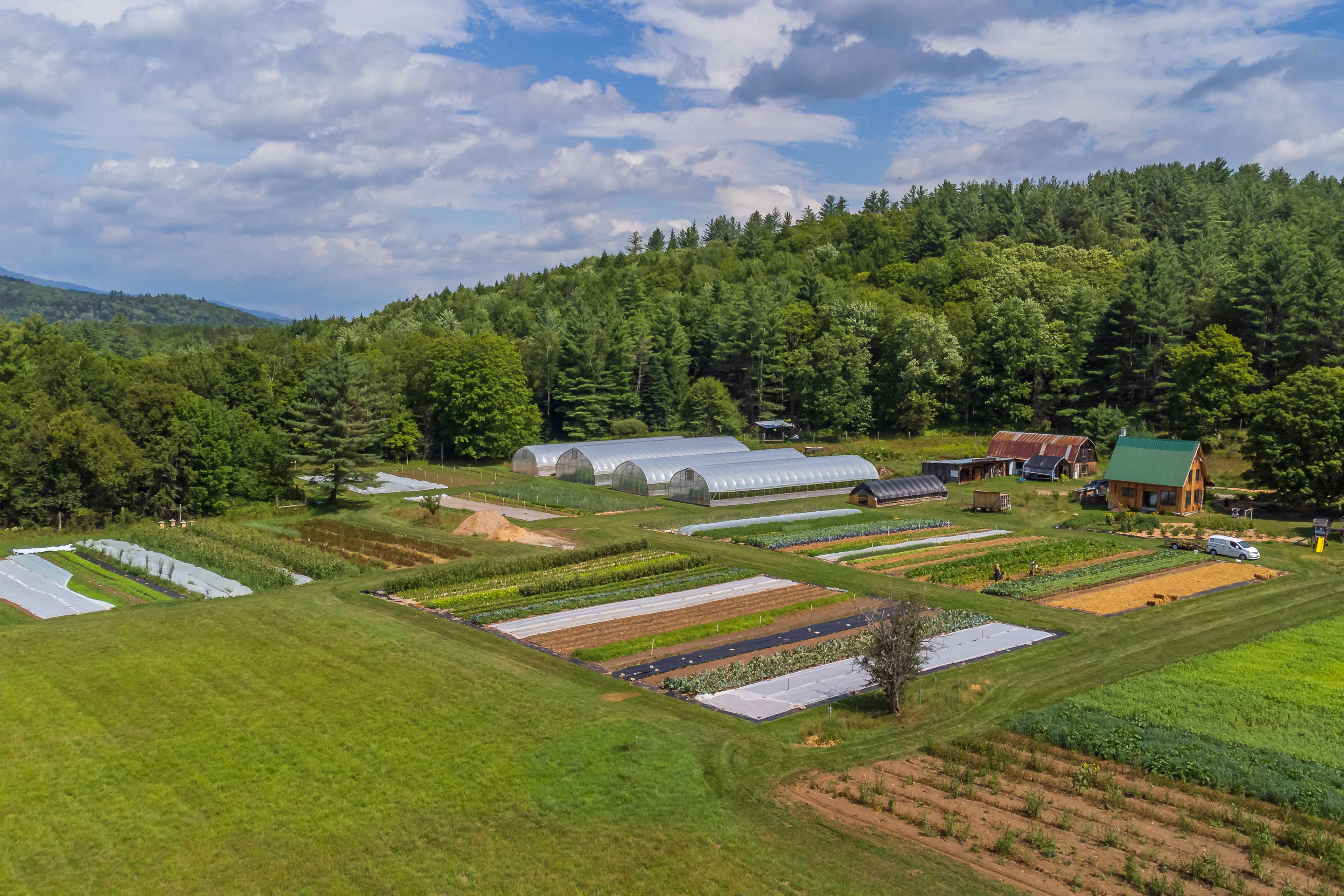
- Permanent Bed System - “We use a permanent bed approach for the majority of the crops we cultivate so that we don’t have to till or disturb the soil with any equipment other than our hands, garden rakes, and a digging fork for crops like carrots. This lets us farm while focusing on growing soil organic matter, not disturbing beneficial fungi, and improving overall soil health. We layer fertility on top of the bed and our goal is to never leave garden soil bare. We grow lots of cover crops with this system too. We let them winter kill or crimp down and solarize with tarps if they are grown in spring and summer.”
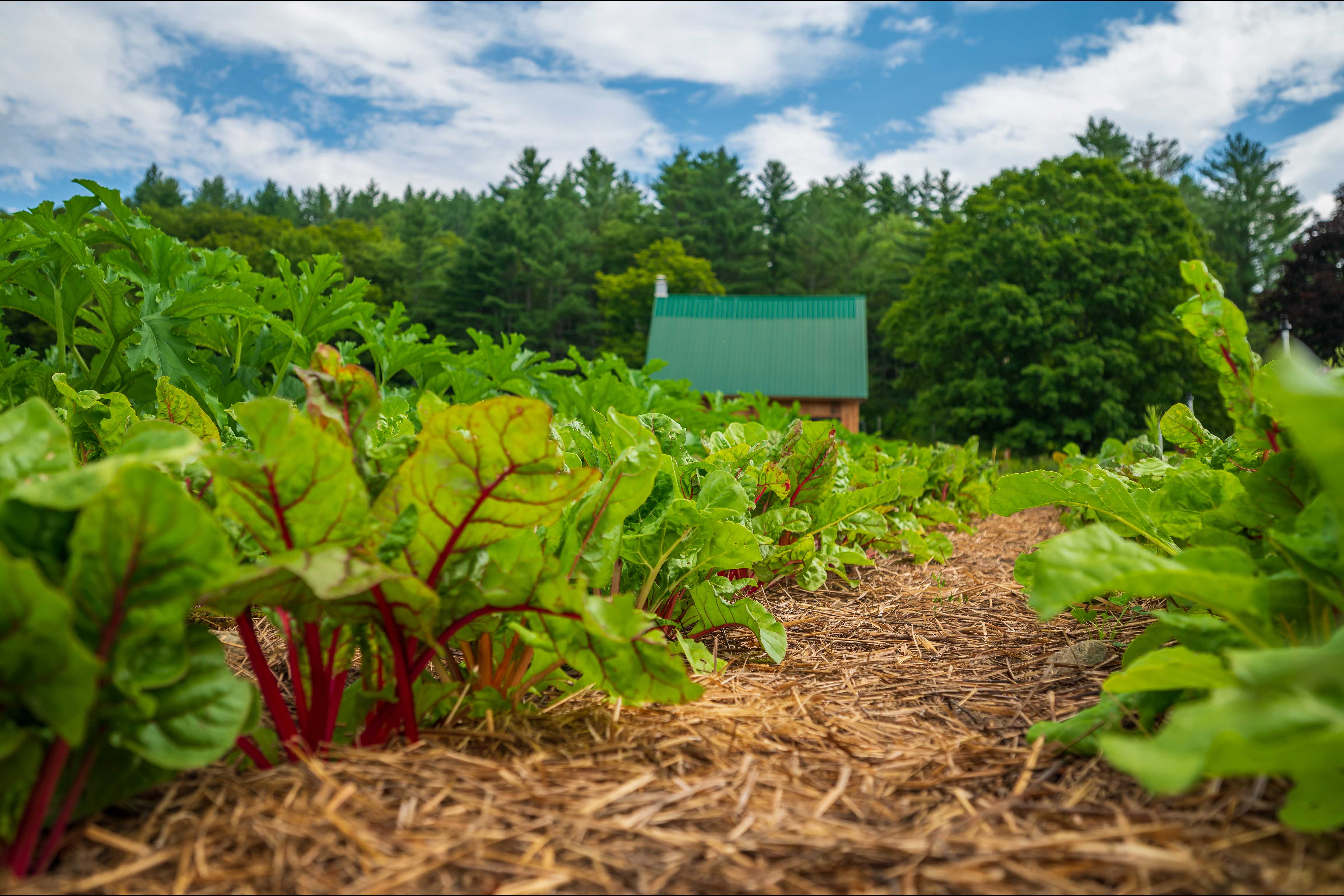
Straw Mulch - “We started our permanent beds by using lots of compost, but have turned more and more to using mulches and cover crops for fertility. One of our favorite mulches is CLEAN straw. It is easy to use, can be stored overwinter and used as needed, and provides great winter cover for beds. We are leaving the garden completely protected with mulch over the winter in case of heavy rains. We can no longer rely on winter snow cover to protect our soil.”
Ryan Fitzbeauchamp From Evening Song Farm in Cuttingsville
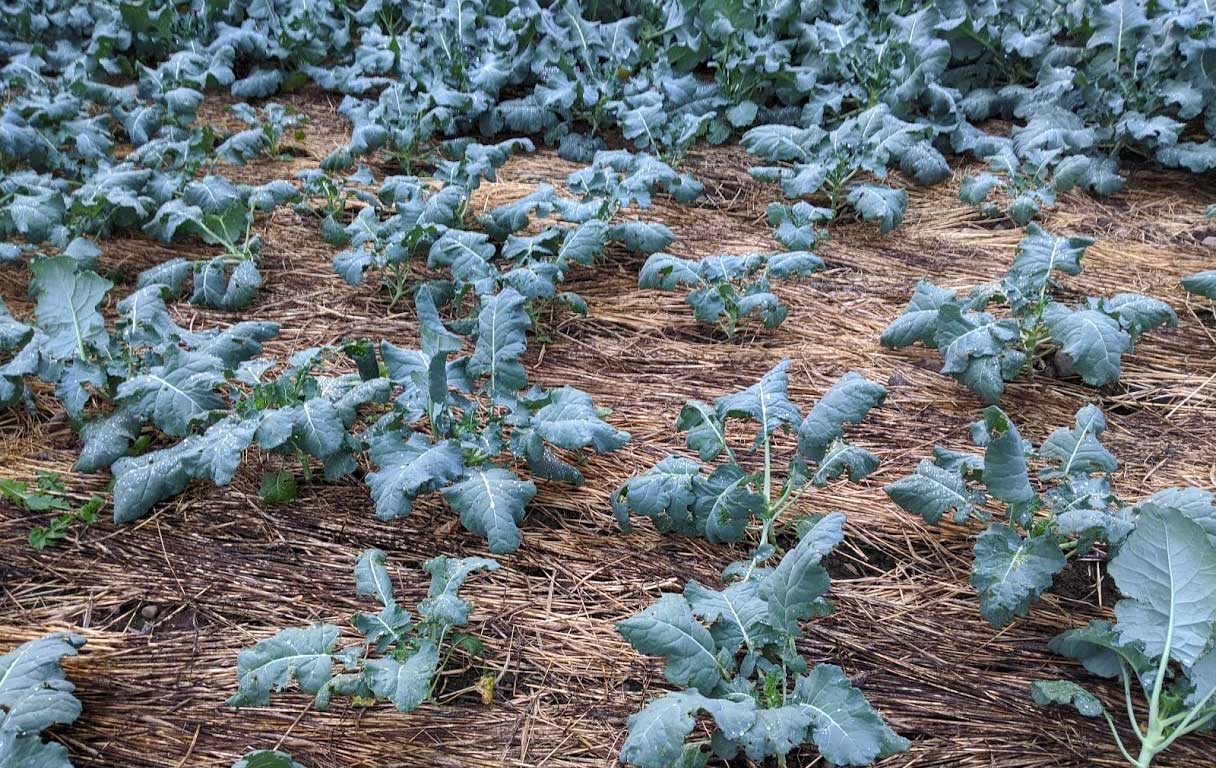
Planting Into Cover Crop Residue - “Since 2020, our farm has been transplanting crops directly into dead cover crop residue, without first incorporating that residue into the soil through tillage. In our farm’s context, theere are several advantages to this approach. The thick cover crop residue mulches the soil surface, which greatly reduces the risk of erosion, suppresses the growth of annual weeds, and conserves moisture in the soil for the following crop. The soil itself is also well structured from the undisturbed root system of the previous cover crop and the associated microbial community of those roots. We see our transplanted crops consistently flourish in the weeks after transplanting due to the well-structured soil. The mulched soil surface prevents soil from splashing on plant leaves and we see remarkably less disease in these crops compared to our previous growing methods on bare soil. In some instances, transplanting through legume cover crop residue allows our farm to grow all of the fertility needed for good yields on the following crop. Experimenting with these systems to improve the fertility of our farm’s soil is one of the most energizing and rewarding parts of my work.”
Ansel Ploog From Flywheel Farm in Woodbury
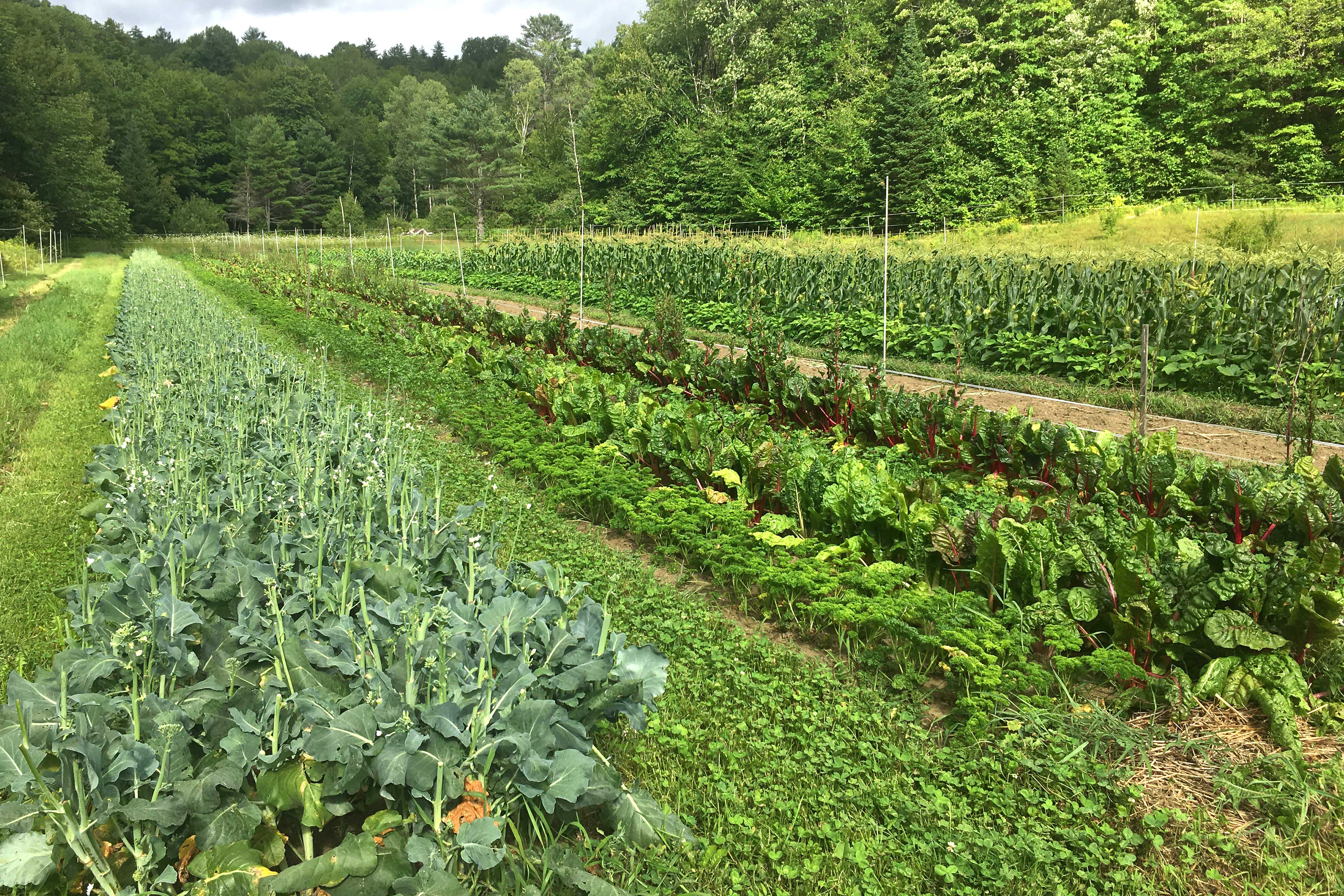
Living Wheel Tracks Between Growing Beds - “We plant Dutch white clover and native grasses in strips between annually planted beds. This creates habitat for pollinating insects and critters, while also being an enjoyable experience for humans as it helps the soil to stay cool. The living root systems of the clover and native grasses support soil biology and also minimize overall soil disturbance – we’re not trying to maintain weed-free soil between beds.”
Henry Webb From Old Road Farm in Granville
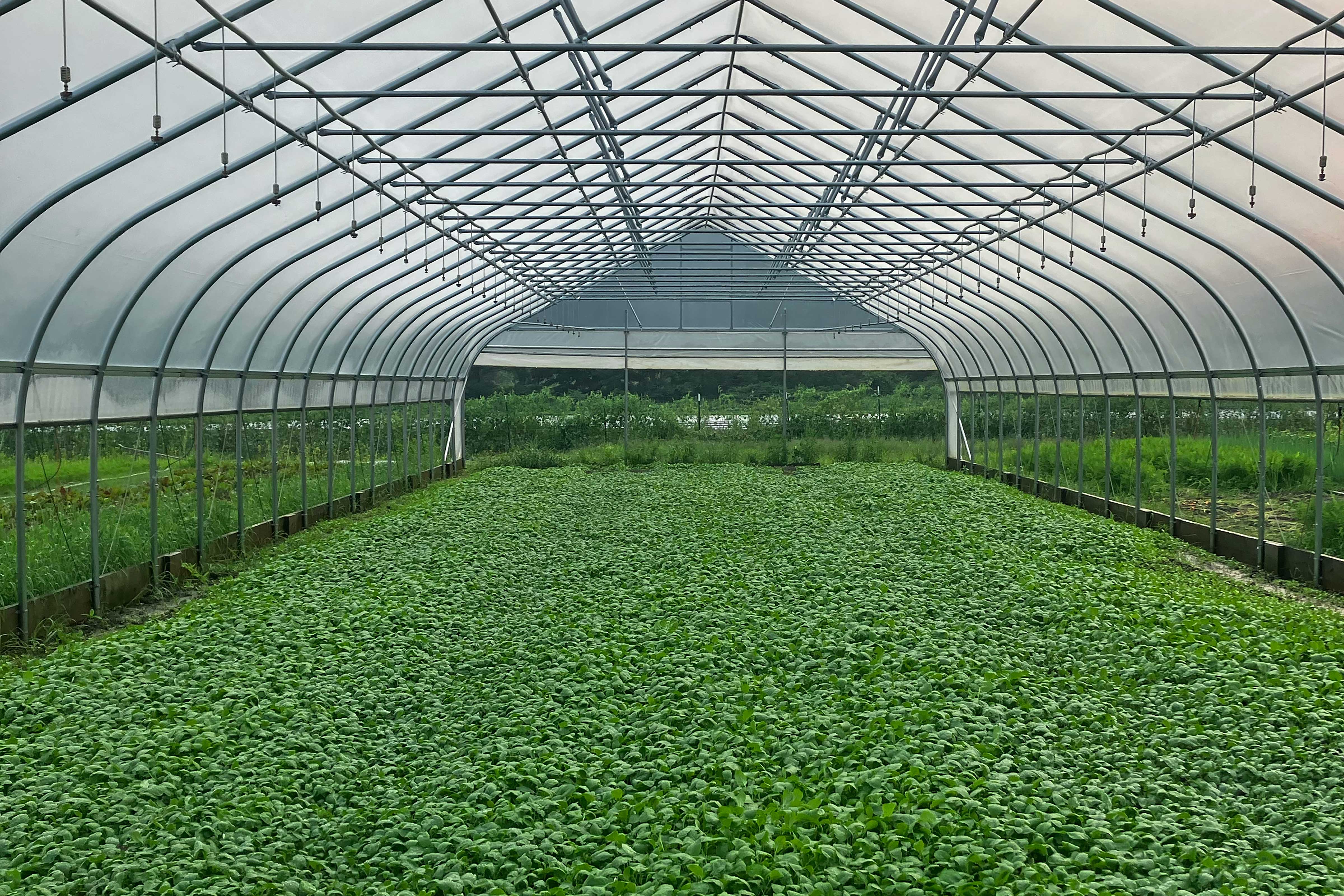
- Cover Cropping - “We are using a mustard cover crop mid-summer in our high tunnels that see intensive lettuce production in the spring and fall as a way to add organic matter as well as for soil biofumigation. After two seasons I have definitely seen reduced disease pressure in the tunnels, which I attribute partially to this practice. Another thing we have been working on the last couple of years is bringing more land into production so that we can incorporate longer rotations between intensive vegetable cropping. I would like to see anywhere from 1/3 to 1/2 of our cropland in a full-season cover crop any given year to increase organic matter on our sandy soil and help manage weed pressure.”
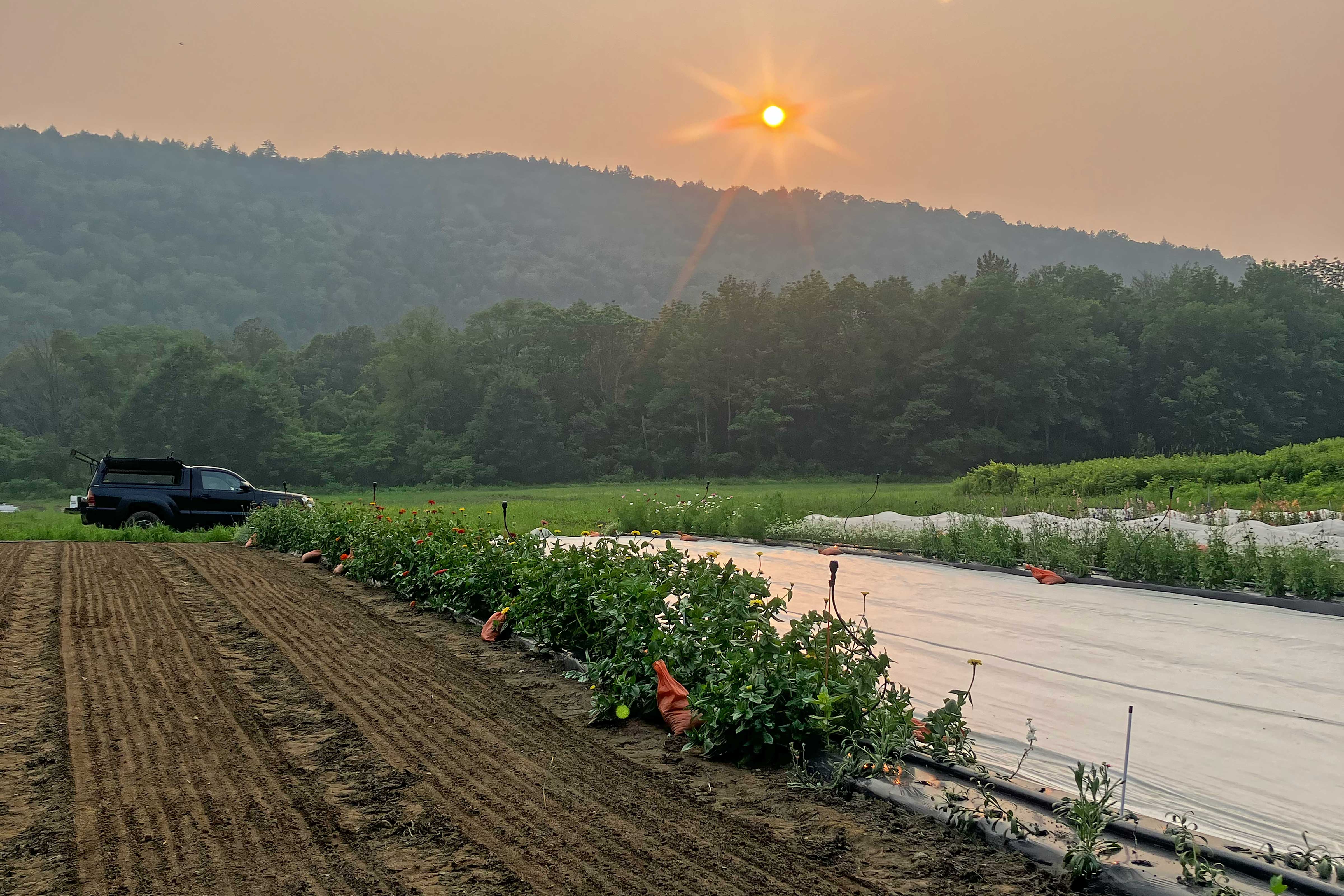
- Tarping - “We use tarping as part of our rotation for certain short-season crops like arugula and spinach that we seed every week. After preparing beds with tillage in the spring and seeding our first rounds of those crops, we experimented with tarping to terminate the crop after harvest and then seeding again into the existing bed. We had good results, and those beds held up better under the adverse conditions we had last season with less soil crusting from the pounding rains, better germination, and less weed pressure. It doesn’t work for every crop but at our scale, it is a good tool to have. The picture shows beds freshly seeded after the tarp was removed. We lightly rake the bed tops to incorporate amendments and remove large residue that would interfere with the seeder. In a year like last year, it was much easier to find a dry window to prep beds that way than wait to be able to bring the tractor into the field without creating problems.”
